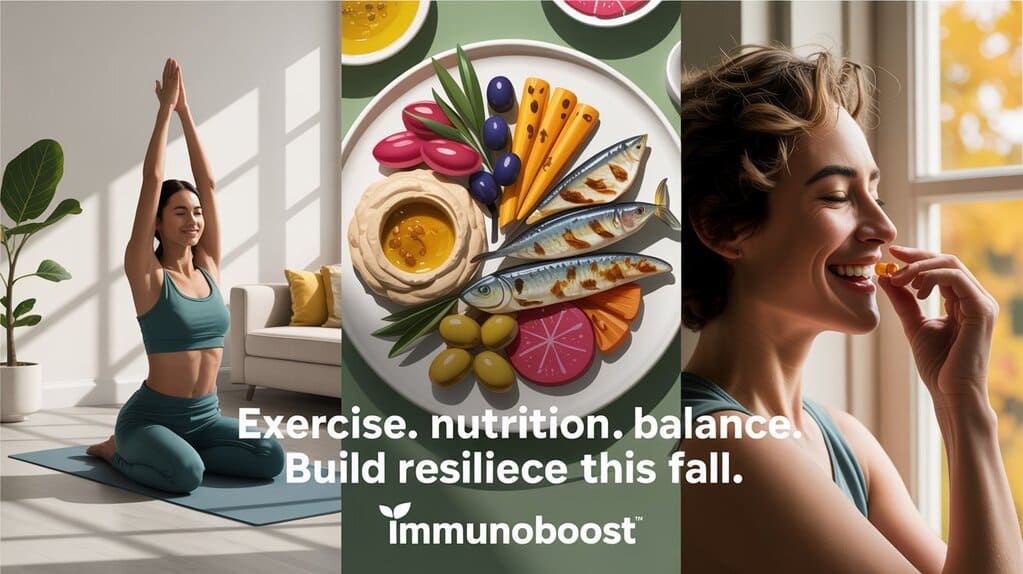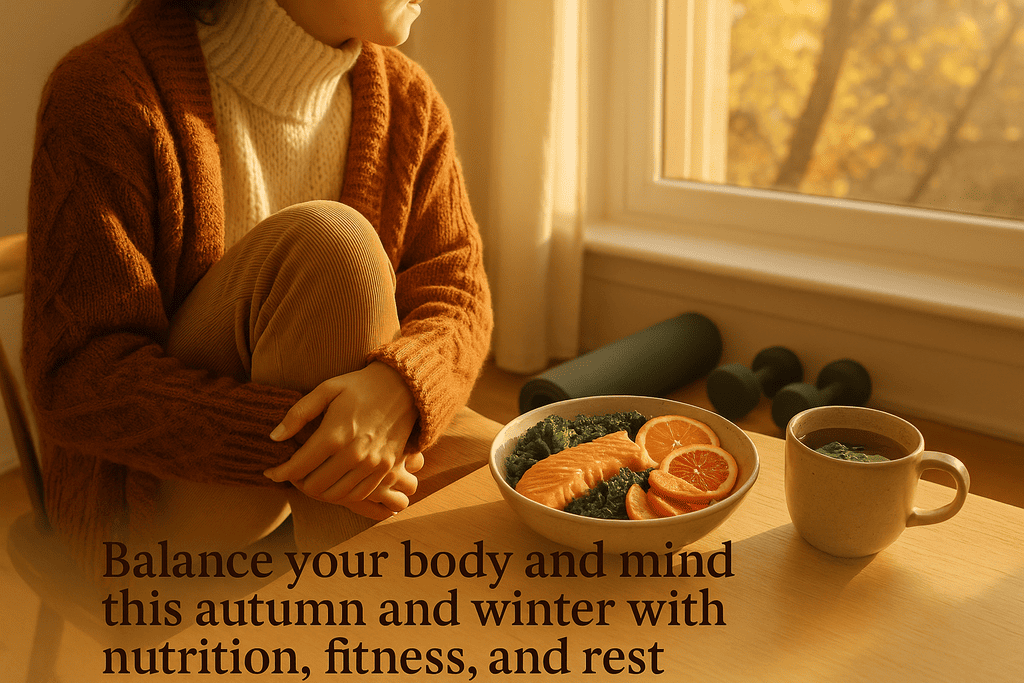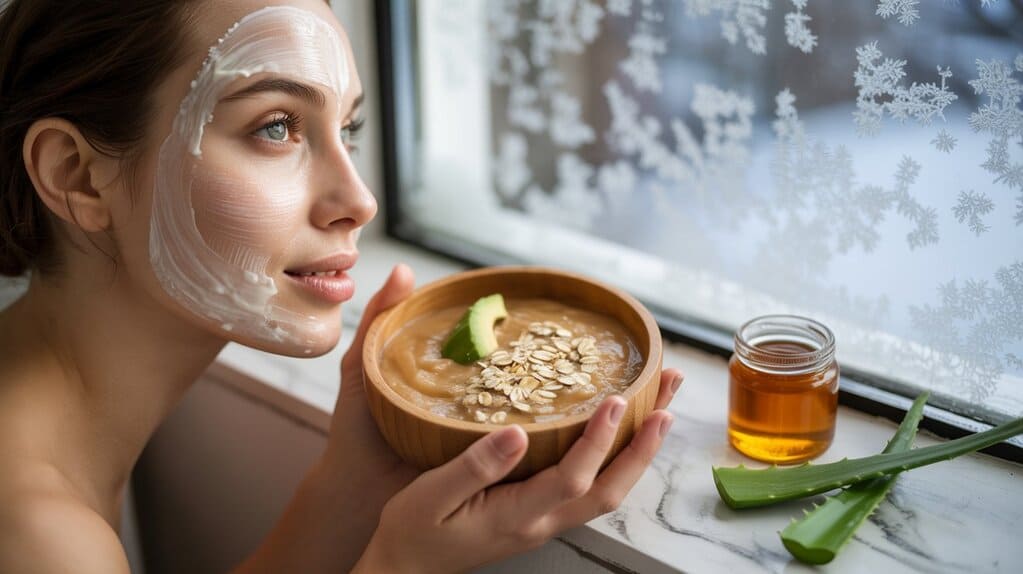
Introduction
Autumn brings cooler air, changing daylight, and a higher incidence of respiratory infections. Preparing your body through sensible fitness, targeted nutrition, and lifestyle strategies that support a robust immune system can dramatically lower your risk of seasonal illness and help you feel energetic and resilient. This guide combines practical, evidence-based recommendations with recent scientific findings from researchers across Asia, America, and Europe—so you can build a balanced autumn plan that supports health, performance, and long-term wellbeing. PMC+1
Why fall is a critical season for immunity
Several factors make autumn a vulnerable period for infections: lower outdoor temperatures (leading to more indoor crowding), reduced sunlight exposure (affecting vitamin D status), changes in diet and activity patterns, and shifting sleep schedules. Epidemiological and clinical reviews highlight that seasonal changes interact with nutrition, sleep and activity to influence susceptibility to respiratory infections. Proactive measures during autumn therefore pay dividends. PubMed+1

Core pillars : Fitness, Nutrition, Sleep & Circadian Health
Below are the four interlocking pillars that support immunity and vitality in fall: moderate exercise, balanced nutrition, quality sleep, and circadian rhythm alignment. Each pillar has practical steps and scientific backing.
1. Moderate exercise : boost immunity without overtraining
- Aim for regular moderate-intensity exercise such as brisk walking, cycling, swimming, or bodyweight circuits for 150–300 minutes per week, or strength training 2–3 times weekly. Regular moderate activity has been shown to enhance innate and adaptive immune responses and reduce systemic inflammation. However, prolonged very high-intensity training without adequate recovery can temporarily suppress some immune functions, so balance is essential. PMC+1
- Practical autumn workouts:
- Outdoor brisk walks in daylight (20–45 minutes), weather permitting.
- Two resistance sessions per week focusing on compound moves (squats, rows, deadlifts/hinge patterns, push-ups).
- Short interval sessions (10–20 minutes) on days you can’t fit in a full workout.

2. Nutrition: anti-inflammatory, immune-supportive eating
Key nutrition goals for fall:
- Emphasize an anti-inflammatory dietary pattern—plenty of vegetables, fruits, whole grains, legumes, nuts, seeds, and oily fish (rich in omega-3). The Mediterranean-style dietary pattern consistently shows benefits for inflammation markers and immune-related outcomes. PMC+1
- Ensure adequate protein for immune cell production and muscle maintenance (about 1.0–1.6 g/kg/day depending on activity).
- Prioritize micronutrients known to support immunity: vitamin D, vitamin C, zinc, iron, and certain B vitamins—ideally through food first and targeted supplementation when necessary. Reviews indicate vitamin D supplementation can modestly reduce the risk of acute respiratory infections, especially when given daily or in moderate daily equivalents. PubMed+1
- Support gut health with prebiotic fibers and probiotic-containing foods (yogurt, kefir, fermented vegetables). Several meta-analyses and systematic reviews suggest certain probiotic strains can reduce the incidence or duration of upper respiratory infections, particularly in children and some adult populations. advances.nutrition.org+1
Quick food checklist (daily)
- 5+ servings of vegetables and fruit (variety and color)
- 1–2 servings oily fish per week (or plant omega-3 if vegetarian)
- Lean protein at each meal
- Whole grains and legumes
- Fermented foods or a tested probiotic product if indicated
- Adequate fluids (water, herbal teas)

3. Sleep and circadian timing
Quality sleep is not optional for immunity. Sleep supports vaccine efficacy, cytokine production, T-cell function, and recovery from infection. Short or fragmented sleep is associated with impaired immune responses and higher infection risk. Aligning activity and eating windows with daylight and prioritizing 7–9 hours nightly helps immune resilience through autumn. Physiological Journals+1
4. Stress management and recovery
Chronic stress raises cortisol, which can dampen immune defenses. Use practical stress-reduction strategies—mindful breathing, short meditations, scheduled social time, or light restorative activities (walking in nature, journaling). Recovery days and sleep quality are also important to prevent the negative immune effects of chronic physiological stress. PMC
Practical autumn plan (sample weekly schedule)
| Day | Activity | Nutrition focus |
|---|---|---|
| Monday | 30–40 min brisk walk + mobility | Protein-rich breakfast, vegetables at lunch |
| Tuesday | Strength training (45 min) | Oily fish / plant omega-3 dinner |
| Wednesday | Rest or gentle yoga | Fermented food + whole grains |
| Thursday | Interval workout (20 min) | Colorful salad + legumes |
| Friday | Strength training (30–45 min) | Vitamin D consideration (after testing) |
| Saturday | Outdoor hike or long bike ride | Hydration and snack with fruit/nuts |
| Sunday | Active recovery, light stretching | Plan weekly meals, prioritize sleep |
(Adjust volume based on fitness level. For older adults or those with chronic conditions, consult a healthcare provider before starting new exercise or supplement regimens.)

Supplements : when and how
- Vitamin D: Low sunlight in autumn/winter commonly reduces vitamin D status. Randomized trials and meta-analyses indicate daily low-to-moderate vitamin D (e.g., 400–1,200 IU/day) may reduce acute respiratory infection risk; the greatest benefit is often seen when baseline vitamin D is low. Consider checking serum 25(OH)D if possible and discuss dosing with a clinician. PubMed+1
- Probiotics: Evidence varies by strain. Some Lactobacillus and Bifidobacterium strains have shown reductions in upper respiratory infection incidence and duration in children and adults. Choose clinically studied strains and validated products when possible. advances.nutrition.org+1
- Vitamin C & Zinc: These can shorten the duration of colds in some contexts; best used within early symptom onset. Routine megadoses are unnecessary and can cause side effects; follow recommended daily allowances or clinical guidance.
- Protein & Multivitamins: In populations with poor intake (older adults, restrictive diets), protein supplementation and a standard multivitamin/mineral formula can support immune competence. Evidence supports targeted supplementation when dietary intake is insufficient. PMC
Special considerations by population
- Older adults: Immune senescence, sarcopenia risk, and micronutrient deficiencies are more common. Emphasize resistance exercise, adequate protein, vitamin D testing and correction, and timely vaccinations. Evidence indicates exercise interventions reduce pro-inflammatory markers and can improve immune profiles in overweight/older adults. ScienceDirect+1
- Children: Probiotics and adequate micronutrient intake (including vitamin D) have shown benefit in some pediatric studies for reducing respiratory tract infection incidence. Maintain routine vaccination schedules and encourage active play and sleep. isappscience.org+1
- Athletes & heavy trainers: Periodize training and schedule rest; heavy, prolonged exercise bouts without recovery may transiently impair certain immune parameters—balance intensity and recovery to protect immunity. PMC
Table: Key nutrients and food sources
| Nutrient | Why it matters | Food sources |
|---|---|---|
| Vitamin D | Supports innate immunity, helps reduce ARI risk when deficient | Fatty fish, eggs, fortified foods; supplement if low |
| Vitamin C | Antioxidant, supports leukocyte function | Citrus, berries, bell peppers, broccoli |
| Zinc | Important for T-cell function and wound healing | Meat, shellfish, legumes, seeds |
| Protein | Builds immune cells, antibodies, and repairs tissue | Lean meat, fish, dairy, legumes, soy |
| Omega-3 fatty acids | Anti-inflammatory benefits | Salmon, mackerel, walnuts, flaxseed |
| Prebiotics/probiotics | Gut-immune axis, may reduce RTI risk | Yogurt, kefir, sauerkraut, fiber-rich foods |
Evidence snapshot — what recent science says (select findings)
- A major meta-analysis and randomized trials indicate vitamin D supplementation can modestly reduce the risk of acute respiratory infections, particularly with daily supplementation and in people with low baseline levels. PubMed+1
- Reviews of dietary patterns show the Mediterranean diet lowers systemic inflammation markers and supports immune health—eating more plant foods, healthy fats, and less refined sugar is consistently beneficial. PMC
- Systematic reviews and meta-analyses suggest some probiotic strains reduce the incidence or duration of upper respiratory infections in children and certain adult populations; strain selection matters. advances.nutrition.org+1
- Sleep and circadian timing are mechanistically and clinically linked to immune function; poor sleep reduces vaccine responses and increases infection risk. Physiological Journals+1
- Exercise dose matters: regular moderate exercise enhances immune surveillance and lowers chronic inflammation, while excessive intense exercise without recovery may temporarily suppress some immune functions. PMC+1
Practical tips to implement immediately
- Move daily—10–30 minutes of brisk walking counts.
- Prioritize vegetables, whole foods, and protein at every meal. Avoid excessive processed sugar and refined carbs.
- Aim for consistent bedtime and wake time—7–9 hours of sleep.
- Test vitamin D if you’re at risk (older, low sun exposure, darker skin) and discuss dosing with a clinician.
- Consider a clinically studied probiotic if you have frequent colds—choose products with proven strains and doses.
- Hydrate, manage stress, and maintain social connections—mental health supports physical immunity.
Conclusion
Autumn is an ideal time to build resilient habits: combine moderate exercise, nutrient-dense foods, quality sleep, and targeted supplementation when needed. Small, consistent changes—an extra walk in daylight, prioritizing a protein-rich dinner, checking vitamin D status, and protecting sleep—compound to meaningful improvements in immunity and wellbeing. Follow evidence-based strategies from global research and tailor them to your age, health status, and lifestyle. When in doubt, consult your primary care provider or a registered dietitian for personalized guidance.
References (selected)
- Jolliffe DA, et al. Vitamin D supplementation to prevent acute respiratory infections: a systematic review and meta-analysis of individual participant data. (2021). PubMed+1
- López LFM, et al. Dietary Modulation of the Immune System (Review). (2024). PMC. PMC
- Koelman L, et al. Effects of Dietary Patterns on Biomarkers of Inflammation. (2021). PMC. PMC
- Besedovsky L, et al. The Sleep-Immune Crosstalk in Health and Disease (Review). (2019). Physiological Reviews. Physiological Journals
- Coleman JL, et al. Orally Ingested Probiotics, Prebiotics, and Synbiotics as Countermeasures for Respiratory Tract Infections (Systematic review). (2022). Advances in Nutrition. advances.nutrition.org
- ISAPP / related summaries on probiotics and respiratory infections (2024). isappscience.org
- Teodoro TH, et al. Effects of acute and chronic exercise on immune markers (Frontiers, 2025). Frontiers
- Wang CH, et al. Optimal methods of vitamin D supplementation to prevent ARIs (2024). PMC. PMC







